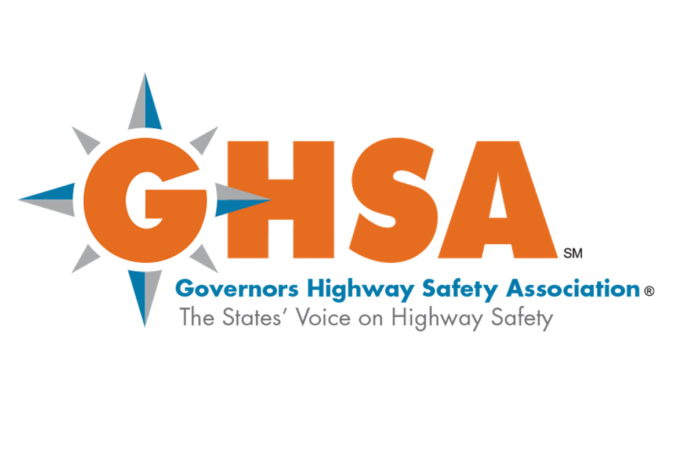WASHINGTON, D.C. — As cannabis use becomes more prevalent in the United States, the Governors Highway Safety Association (GHSA), Responsibility.org and the National Alliance to Stop Impaired Driving (NASID) today released a new report that provides guidance on how State Highway Safety Offices (SHSOs) can better communicate with cannabis consumers about safe driving and offers recommendations about the types of messages that do and don’t work.
The report, Cannabis Consumers and Safe Driving: Responsible Use Messaging, comes as SHSOs face a rapidly changing cannabis landscape that includes the legality, prevalence and social norms about its use. In 2011, no state had legalized recreational cannabis. Just 10 years later, 18 states have done so, and more states will have legalization on the ballot this November. Cannabis use has increased alongside the spread of state legalization. In 2019, 18% of people aged 12 and older in the U.S. reported using cannabis in the past year, up from 11% in 2002. Attitudes about cannabis use are changing, too. The drug is celebrated in places where it has traditionally been shunned. This year, two candidates for U.S. Senate have aired ads featuring them smoking cannabis.
Even as more people become familiar with cannabis and calls for national legalization grow, there remains a significant disconnect between people’s views on its use and safe driving, emphasizing the need for effective public outreach and education. An AAA Foundation for Traffic Safety survey found that 95% of people say driving while over the legal blood alcohol concentration (BAC) limit is very or extremely dangerous, but only 69% believe it is dangerous to drive within an hour of consuming cannabis. Some people even think that cannabis use improves their driving. But research confirms that cannabis directly affects the parts of the brain responsible for attention, decision-making, coordination, and reaction time, which are all critical for safe driving.
Compounding the challenges of addressing cannabis- and multiple substance-impaired driving, early signs point to cannabis playing an increasing role in traffic fatalities during the COVID-19 pandemic. Data from trauma centers indicated that 33% of drivers involved in fatal crashes had tetrahydrocannabinol (THC), the main psychoactive compound in cannabis, in their system – a significant increase from 21% before the pandemic. Cannabis was slightly more prevalent than alcohol in fatal crash-involved drivers (33% for cannabis vs. 29% for alcohol) during the pandemic. Impairment from multiple substances also rose the past few years, with 25% of drivers in fatal crashes testing positive for more than one impairing substance, compared to 18% before the pandemic.
“As legal cannabis use becomes more widespread in the U.S., motorists need to know the dangers of driving under the influence,” said GHSA Executive Director Jonathan Adkins. “But that message won’t be heard if it’s outdated, irrelevant or insulting to cannabis consumers. This new report offers a playbook to help states develop messaging that resonates with cannabis users and prompts them to refrain from driving for their own safety and the safety of everyone else on the road.”
The report highlights lessons learned from outreach efforts in Colorado and Washington, the first states to legalize cannabis, as well as more recent efforts in Connecticut and Wyoming. It also discusses promising practices that all SHSOs should consider utilizing to create the most effective messages and offers the following recommendations:
Encourage dedicated funding for traffic safety programs derived from a portion of cannabis sales tax revenue so that states and their partners can deliver timely and relevant information to the public.
Form partnerships with the cannabis industry, which can help states gain insights on consumer motivations and behaviors, develop and deliver impactful messaging, and legitimize safety efforts.
Enlist trusted advisors to serve as messengers. Have people and institutions that cannabis users trust – rather than government representatives – convey factual safe driving messages. Diverse and non-traditional messengers can improve message reception with cannabis consumers.
Use language that resonates with cannabis consumers, so they hear the safe driving message instead of tuning it out because it has outdated terminology. Avoid using unflattering or alienating stereotypes of cannabis consumers.
“Impaired driving, whether it involves alcohol, cannabis, other drugs or a combination of substances, is wreaking havoc on our nation’s roads, and we all must respond quickly and effectively,” said Darrin Grondel, Ed.D., Vice President of Government Relations and Traffic Safety for Responsibility.org and Director of NASID. “The messages, strategies, data, and approaches identified in this new report will make that response more effective in positively changing cannabis consumer behavior to the benefit of every American on our nation’s roadways.”
The report’s findings and recommendations will be discussed during a session at the 2022 NASID Conference, July 27-29 in Washington, DC, featuring Karen Sprattler of the Sprattler Group, who researched and wrote the report. NASID was established by Responsibility.org to eliminate impaired driving in all its forms, especially multiple substance impaired driving.
The NASID website features an interactive, online database updated in real-time that lets users easily see cannabis and DUI laws across the U.S.
About GHSA
The Governors Highway Safety Association (GHSA) is a nonprofit association representing the highway safety offices of states, territories, the District of Columbia and Puerto Rico. GHSA provides leadership and representation for the states and territories to improve traffic safety, influence national policy, enhance program management and promote best practices. Its members are appointed by their Governors to administer federal and state highway safety funds and implement state highway safety plans. Visit ghsa.org for more information or follow us on Facebook and Twitter.
About Responsibility.org
Responsibility.org is a national not-for-profit that aims to eliminate drunk driving and work with others to end all impaired driving, eliminate underage drinking, and empower adults to make a lifetime of responsible alcohol choices as part of a balanced lifestyle. Responsibility.org is funded by the following distillers: Bacardi USA, Inc.; Beam Suntory Inc.; Brown-Forman; Campari Group; Constellation Brands; DIAGEO; Edrington, Mast-Jägermeister US, Inc.; Moët Hennessy USA; Ole Smoky, LLC; Pernod Ricard USA; and William Grant & Sons. For over 30 years, Responsibility.org has transformed countless lives through programs that bring individuals, families, and communities together to inspire a lifetime of responsible alcohol choices. To learn more, please visit Responsibility.org.
About NASID
The National Alliance to Stop Impaired Driving is a coalition established and led by Responsibility.org to eliminate all forms of impaired driving, especially multiple substance impaired driving, through effective and proven measures such as DUI system reform, DUI detection, and improved use of data and technology. To learn more visit NASID.org.












